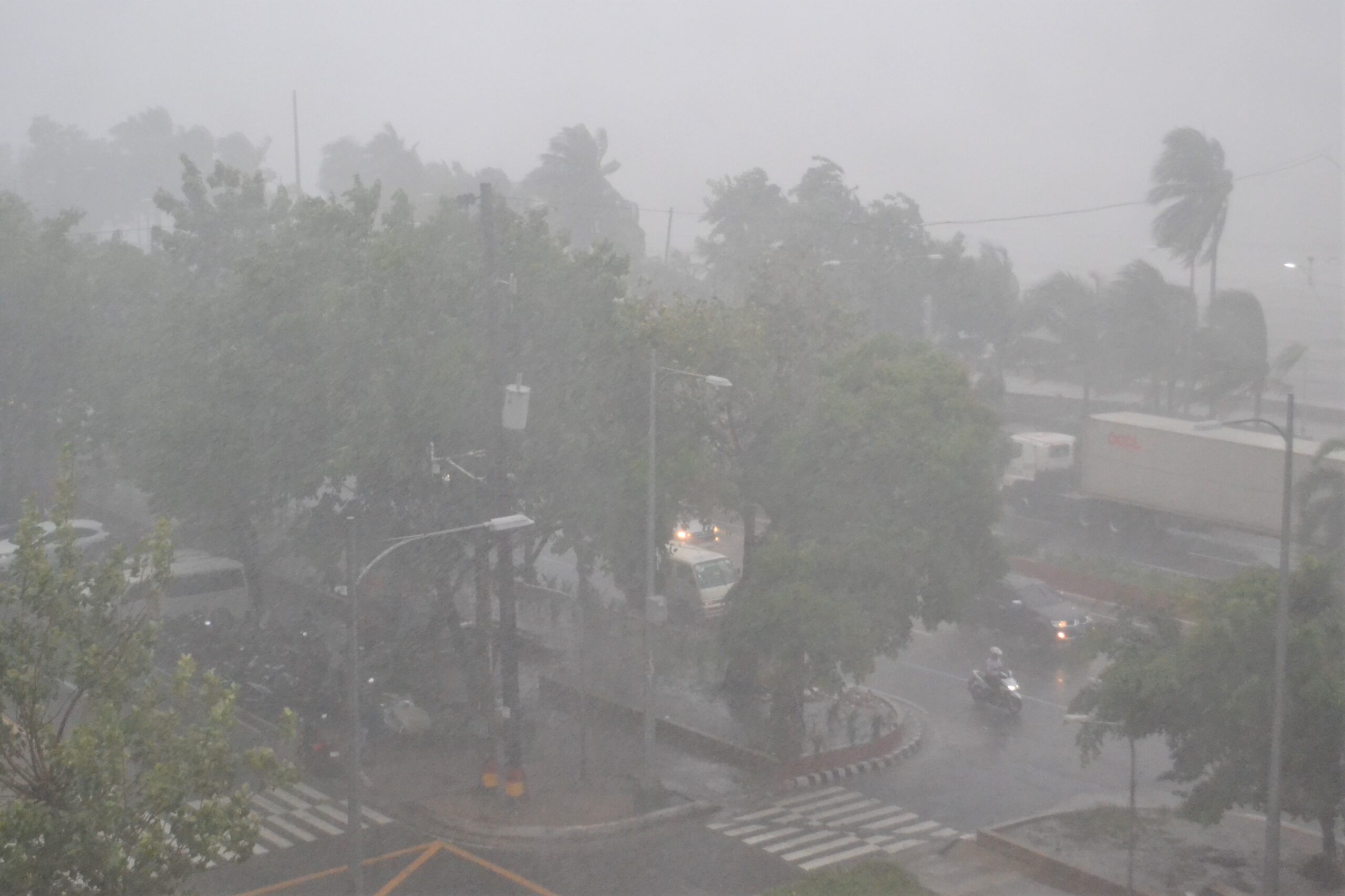Text and Photos by Henrylito D. Tacio
“We cannot stop natural disasters but we can arm ourselves with knowledge: So many lives wouldn’t have to be lost if there was enough disaster preparedness.” – Petra Nemcoya
***
The Philippines, with more than 7,000 islands, is the third most vulnerable country to weather-related extreme events, earthquakes, and sea-level rise.
“Absent of land barriers, the Philippines is exposed directly to multiple climate-related hazards such as typhoons (in the northern and eastern parts), floods (in central Luzon and southern Mindanao), landslides (based on terrain), and droughts, making the Philippines more vulnerable to climate risks than other Southeast Asian countries,” said Getting a Grip on Climate Change in the Philippines, a World Bank report.
Each year, about 20 tropical cyclones – locally known as bagyo – enter the Philippine area of responsibility. “By the end of this century, tropical cyclones are expected to intensify, with a projected increase in the average instantaneous maximum wind velocity at the Philippine coast,” the World Bank report stated.
Floods, which often accompany typhoons, are likely to create havoc among informal settlers, which account for 45% of the country’s urban population. “(They) are particularly vulnerable to floods due to less secure infrastructure, reduced access to clean water, and lack of health insurance,” said the World Bank report.
Climate change will definitely reduce food production in the Philippines. “Many of the country’s poor derive income from agriculture, fishery and natural resources that are vulnerable to climate change,” said World Bank Country Director Motoo Konishi.
Scientists attribute climate change to the rise in global temperature brought about by increased emissions of greenhouse gases such as carbon dioxide and methane. Increased emissions of these gases have been attributed to human activities such as the burning of fossil fuels in motor vehicles and power plants, degradation of forests, and change in land use.
The warming of the earth, scientists say, is causing problems, including extreme weather events like prolonged droughts, intense rains and flooding, storm surges, and intensifying and more deadly storms.
Climate change impacts are aggravated by rapid environmental deterioration, population growth and movement, and unsustainable development practices, according to the World Bank report.
In Mindanao, for instance, widespread mining and deforestation were blamed for recent flash floods, including those produced by Typhoon Sendong in 2011, which cost the lives of about 1,000 people.
One government official puts it: “There is no better way of protecting our people from floods, slides and other hazards brought by typhoons than making them aware and ready on what to do when these situations arise.”
That’s what disaster preparedness is all about.

Disasters often recur in the same place – annually or with a gap of some years, observed Bob Hansford, disaster risk management advisor at Tearfund, a Christian relief and development agency.
In 1972, Central Luzon was inundated due to four storms – from July to August – that hit the region. When Typhoons Pedring and Quiel visited Central Luzon, the region was again flooded.
In his article, “Managing disaster and building safer communities,” Hansford talks about the four things that happen when a disaster strikes: emergency response, rehabilitation, mitigation, and preparation.
“In the first few days and weeks after a disaster, there is a need for search and rescue, medical care, food, water, sanitation and shelter, as well as emotional support,” explains what an emergency response is.
Rehabilitation comes next. “As the weeks pass, houses need to be repaired, water supplies restored, and livelihoods reinstated,” Hansford says. “Rehabilitation is often called recovery.”
Mitigation is closely linked to rehabilitation. Examples include stronger or raised houses, water pumps on raised platforms, and alternative crops to cope better with floods or drought. “Mitigation activities help to ‘build back better,’ making the community more resistant to future hazards,” he says.
Preparation is getting ready for the next disaster that comes. For a storm or flood, it means establishing a warning system, setting aside food or water stocks, making ready an evacuation center, or training volunteers.
But how prepared are Filipinos when disasters strike?
Some years back, I had an opportunity to talk with Dr. Teofredo T. Esguerra, a flight surgeon who is an expert on emergency medical services. “We do not have a rescue or pre-hospital law in the country,” he said. “Our psyche is not much into it.”
When asked how we can respond to disasters, Dr. Esguerra replied: “Filipinos should make it like a part of their lives. They should be like Japanese, who are always prepared; in fact, they have some survival kits which have already become a part of their day-to-day activities.
“We have to be like the Japanese who know they are sitting on the top of a volcano or Israelis who are surrounded by potential enemies,” Dr. Esguerra suggested. “After all, we are along the disaster and accident corridor. We need to have all the knowledge (of all potential disasters) and the readiness (should these disasters come).”

